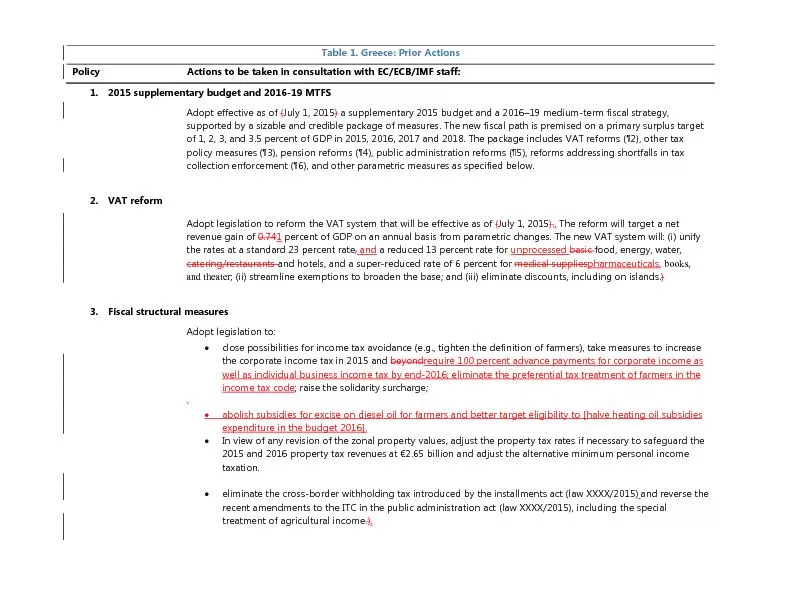PDF-Table 1. Greece: Prior Actions
Author : jane-oiler | Published Date : 2016-06-20
Policy Actions to be taken in consultation with ECECBIMF staff 2 VAT reform Adopt legislation to reform the VAT system that will be effective as of July 1 2015 revenue
Presentation Embed Code
Download Presentation
Download Presentation The PPT/PDF document "Table 1. Greece: Prior Actions" is the property of its rightful owner. Permission is granted to download and print the materials on this website for personal, non-commercial use only, and to display it on your personal computer provided you do not modify the materials and that you retain all copyright notices contained in the materials. By downloading content from our website, you accept the terms of this agreement.
Table 1. Greece: Prior Actions: Transcript
Download Rules Of Document
"Table 1. Greece: Prior Actions"The content belongs to its owner. You may download and print it for personal use, without modification, and keep all copyright notices. By downloading, you agree to these terms.
Related Documents














